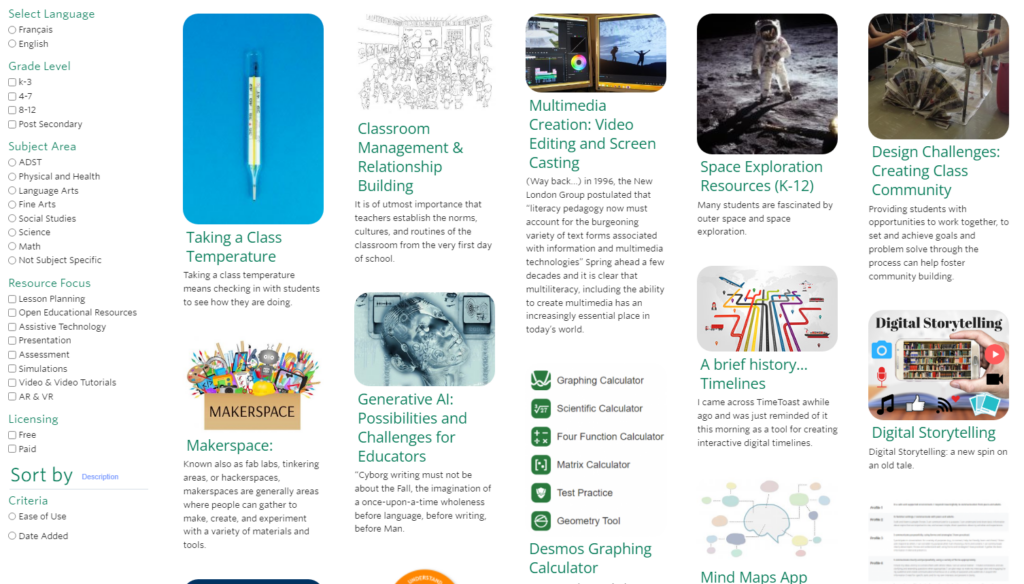
This blog was originally meant to become a repository of tools for teachers that are looking for open and free tools to use for teaching and planning. Although I believe I have been somewhat successful at this, another website was shared with me recently that made me feel somewhat inadequate about my work on this blog. My arts education instructor shared with our class this semester a website where we could find additional resources for art and technology integration called Scarfe Digital Sandbox. She shared this as an addendum to our main focus of the class on that particular day, which was creating stop motion films with plasticine models using Stop Motion Studio and then sharing them with each other using Artivive. Both are available as mobile apps and were used to great success and interest during that class. I have seen Stop Motion Studio used in a middle school within the last few months, so I know that these tools are still new and relevant. Creating these films was an illuminating and fun experience for us university students, though they are not the focus of this blog post. This post is about Scarfe Sandbox.
The website was created by the Faculty of Education at the University of British Columbia (UBC) and is hosted on the UBC website. It is a reasonably large collection of information and external resources that are meant for teaching, planning, and the integration of technology into these subjects. Their homepage as of writing this lists a few preview resources, which include such tips on classroom management, multimedia creation, and space exploration for grades K-12. When you click through to the larger resource repository, you will find dozens and dozens of links, apps, websites, guides, and lesson ideas. Whether you are a seasoned instructor or just starting your teaching career, this website will have something for you. And because this site is hosted by UBC and consistently updated by the Faculty of Education, all of the information is relevant and up to date for us here in British Columbia. Finally, this site is licensed under a Creative Commons 4.0 license, meaning all of the information is free and open for all to use and share.

From what I have seen, the Faculty of Education at the University of Victoria (UVic) has no such website. The closest I have seen (which is still very helpful) is the EDCI 336 homepage. In my view, UVic should follow in UBC’s footsteps and create a dedicated resource page that is clean and straightforward like the Scarfe Digital Sandbox. I am sure that many students and staff in the faculty would benefit greatly from a consolidated list of UVic-approved resources, myself included. The Scarfe Sandbox is consistently updated by the fine PhD candidates and instructors in the Faculty of Education at UBC. UVic also has fine and lovely instructors that want to share their resources and knowledge with their students and others in the world. Why is that being gatekept behind Brightspace pages? Why can’t it be available in a convenient, helpful, and ethical space dedicated to sharing the valuable knowledge held by the staff in the Faculty of Education at UVic? This does open up the question of whether or not universities should be creating digital spaces licensed under Creative Commons licences that contain information which is generally kept behind course paywalls. I do not intend to answer such a complex question in this post. But, if UBC is already creating such digital spaces, what is stopping other universities from following suit? UBC and other schools that have made such moves have sent a valuable message in favour of open education. I encourage more schools, including the one I currently attend, to make similar moves in the future.





